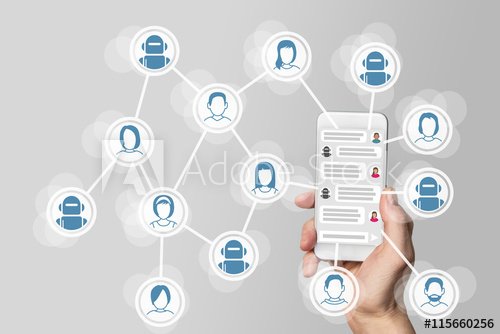In industry sectors like telecommunications, healthcare, finance, energy, utilities, and manufacturing, mundane, repeatable, rule-based, and routine business operations, and processes, have been subjected to automation at an increasing paste.
Exceptional advances and accessibility in the area of technologies such as artificial intelligence, natural language processing, and machine learning are creating a revolution in the industrial and business world.
New waves of extremely lucrative opportunities and possibilities arise. There is an initiative that’s shaking the entire modern business world with fever – the need to increase the degree of automation.
That aside, modern industries are also into a much broader level of application of the most advanced cognitive understanding and higher intelligence capacities to processes and workflows.
Still, the most significant achievement in the area of technology evolution has been in the field of robotic process automation or RPA.
There are also recent developments in conversational AI and chatbot technology that are already disrupting the approach many industries take toward automating business processes.
The rise of chatbots is now more evident than ever, but it’s these technologies that made it happen. Today, RPA and chatbots are moving forward, evolving together.
RPA And Chatbots
Chatbots have been playing a discrete role in the rise of AI that made the digital business what it is today. That’s how RPA and chatbots got together. Digital companies need this tool combination to maximize their ROI, revenue, etc.
More importantly, these tools help businesses achieve their ultimate goal – deliver services that provide higher value to consumers. Chatbots have come a long way since their inception when they were mere script-based tools.
They are the best customer service and support agents that can do miracles in terms of conveying the brand’s message, establishing meaningful connections with target audiences, and more.
When RPA and chatbots are combined, businesses get great benefits. More importantly, this combination can be used to increase the scope of interaction with both employees and consumers.
Then, there’s the scope of the robotic processes too. Intelligent RPA offers so many great options such as RPA in customer service, virtual customer assistants providing 24/7 customer service, and more.
Aside from regular automation, RPA takes automating processes to much higher levels by applying bots or software robots. It helps:
- Improve performance and speed
- Cut costs
- Eliminate inefficiencies
When it comes to the evolution of traditional process automation, it’s safe to say that RPA is the next phase.
What makes RPA so great is its outstanding capability to vary from extremely complex machine learning-based solutions to the most basic rules-based automation. RPA makes chatbots more useful, capable, and versatile.
NLP And Chatbots
The entire process of natural language processing is based on deep learning. This process enables software to analyze inputs provided by consumers or users and use that gathered data to acquire meaning. If RPA makes chatbots more capable, NLP makes them more intuitive.
So intuitive that modern bots can mimic real human communication by assessing the intent of each conversation.
This led to the development of many different types of chatbots. These different bots are created for a wide range of different purposes like virtual assistance, customer service, FAQ, and much more.
NLP Makes Chatbots Versatile In Many Different Ways:
- It makes conversations more natural across different languages by establishing a valuable connection between the users’ inputs and system-generated responses.
- It enhances the customer experience by differentiating between the types of inquiries, understanding speech phrases, text structures, and semantics.
- It helps chatbots learn from each interaction and understanding various emotions.
- It helps reduce both human effort and error in mission-critical operations like invoice processing or customer service.
- NLP-based bots improve IT Helpdesk and Human Resources.
- It helps reduce costs especially the expenses related to manpower or resources used for repetitive operations.
- It improves customer retention.
- NLP-based chatbots help increase customer satisfaction.
AI And Chatbots
Both machine learning and NLP are components of AI. The most intuitive bot-building platforms like SnatchBot allow users to create the best AI chatbot that is capable of making each interaction more lively, conversational, and engaging.
Chatbots With The Best AI Help:
- Answer FAQ
- Understand unique queries
- Personalize responses
- Learn from each conversation and interaction
- Improve future conversations
- Understand your customer’s preference and choices
- Provide impeccable 24/7 customer service
Conclusion
AS bots, conversational AI, RPA, NLP, and other similar technologies continue to evolve, businesses are increasingly extending their horizons beyond the most common uses for bots, like in customer service.
There are service bots, journey bots, automation bots, campaign bots, and employee bots, improving every existing industry with each passing day. NLP makes bots more intuitive, while machine learning allows them to learn and adapt.
RPA makes bots more capable, while AI allows them to become smarter with each subsequent interaction. All these technologies helped numerous organizations understand the full potential of bots and how they can be used to accomplish every business goal put before them.
We can expect to see bots surpass their basic textual form and make their entry into holograms, videos, and animation. One thing is for sure – the rise of RPA, chatbots, and conversational AI will continue to help the business improve the ways how companies work and interact with their consumers.



